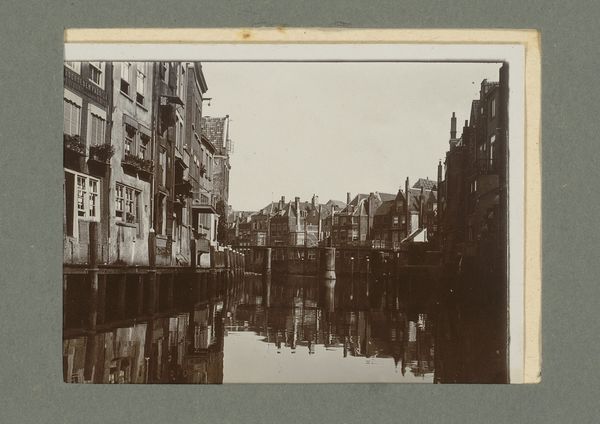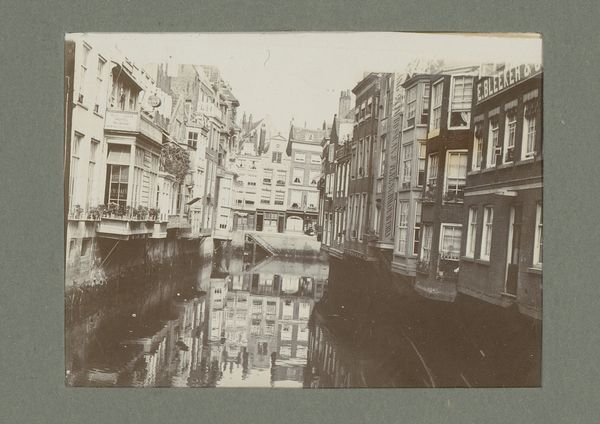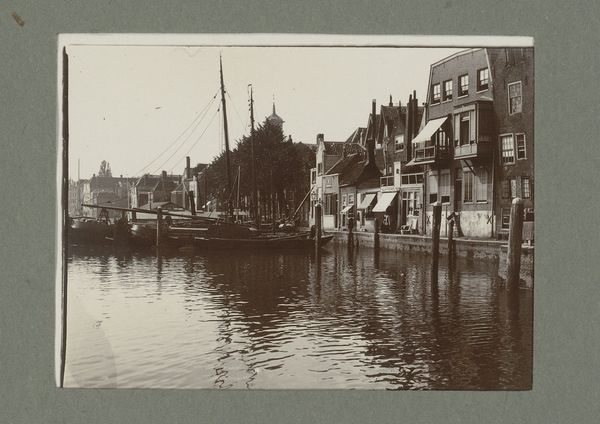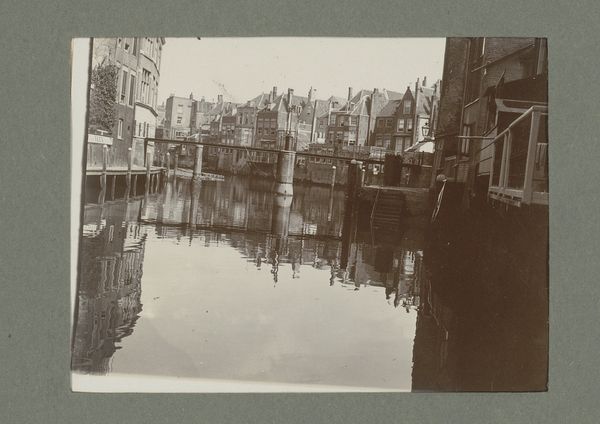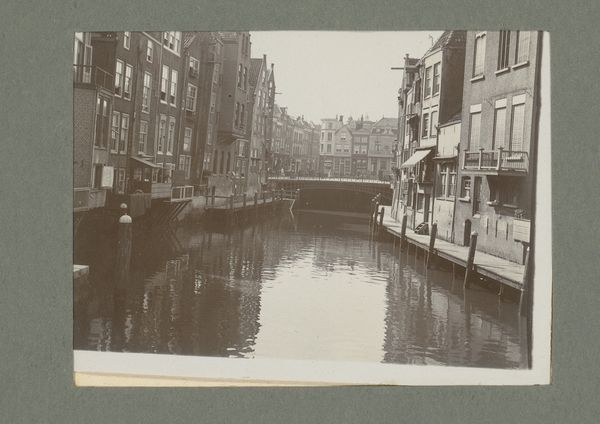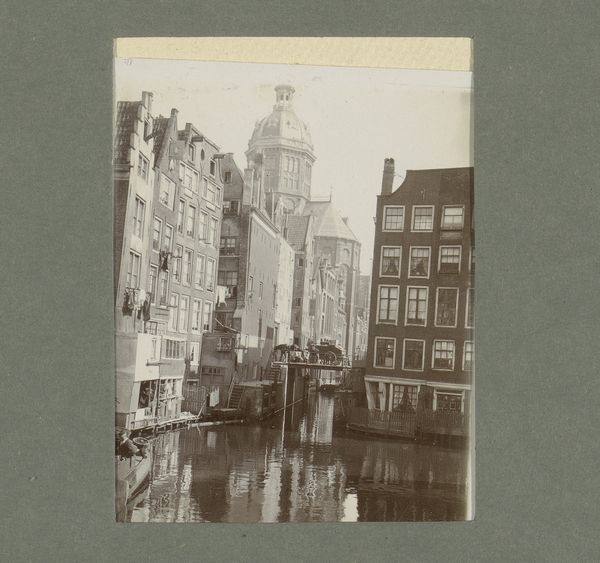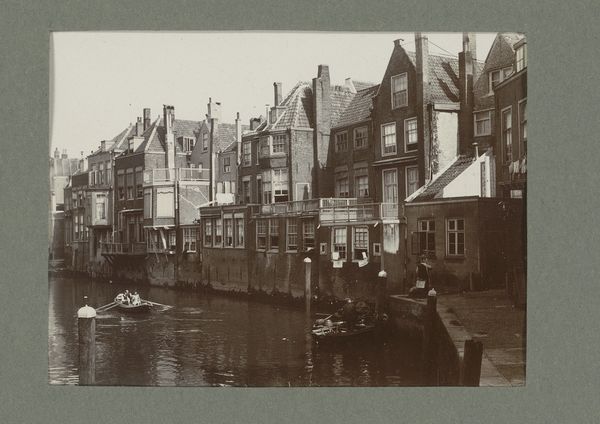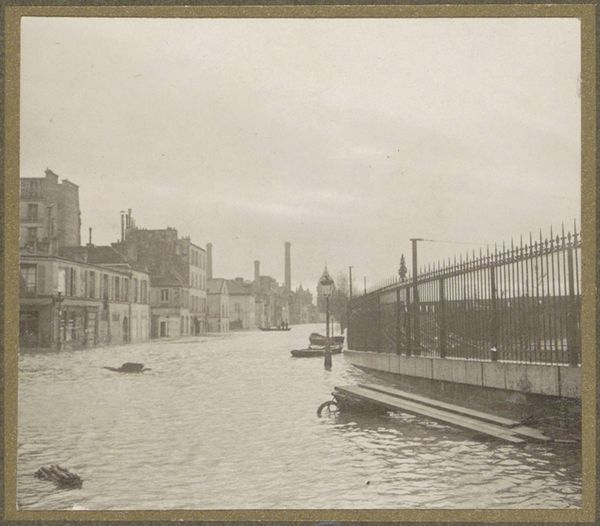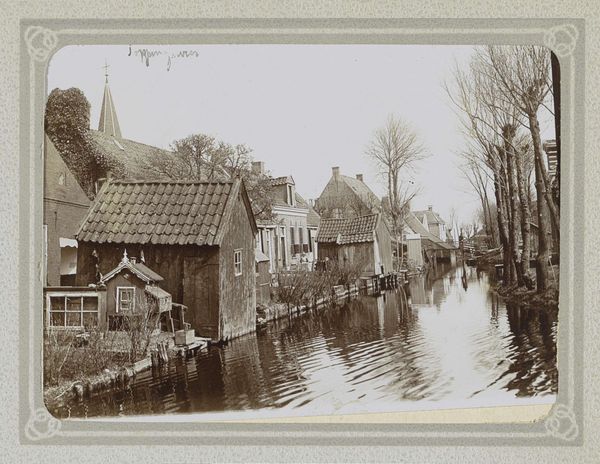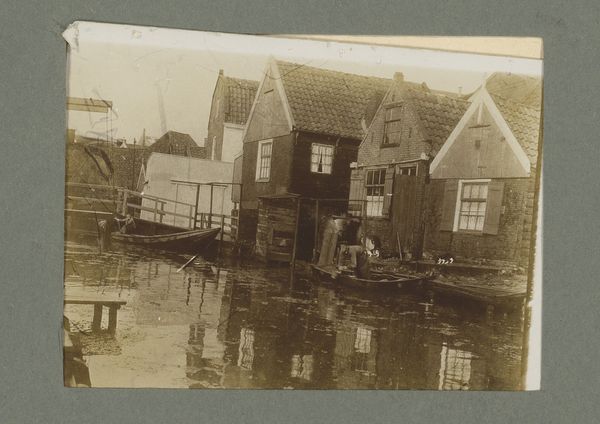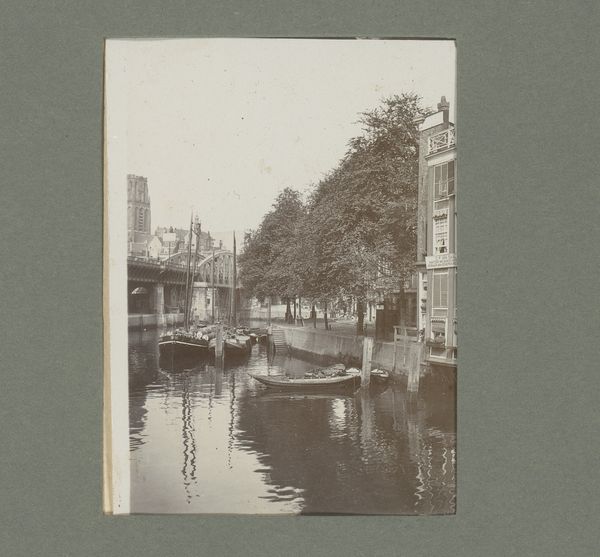
Gezicht op de Wijnhaven richting de Leuvehaven en de Grote of Onze-Lieve-Vrouwekerk te Dordrecht 1900 - 1920
0:00
0:00
Dimensions: height 73 mm, width 99 mm
Copyright: Rijks Museum: Open Domain
Curator: This is "Gezicht op de Wijnhaven richting de Leuvehaven en de Grote of Onze-Lieve-Vrouwekerk te Dordrecht," a gelatin silver print likely created sometime between 1900 and 1920. The photographer is listed as G. Hidderley. Editor: My first thought is of old sepia postcards, that antique world kind of feeling. The reflections on the water are just gorgeous, like blurred echoes. Curator: It certainly captures a sense of time standing still. These harbor views of Dordrecht, particularly images featuring the Grote Kerk, were popular during that era, circulated as tokens of civic pride and as records of urban life adapting to early industrial changes. You know, mass photography really put pressure on traditional painting. Editor: Right? Like, "Oh, you wanna capture light and shadow? I got this new gadget..." And those buildings – they seem to lean in slightly, whispering secrets to each other. Makes you wonder who lived there, what they were thinking about during those bustling times. Curator: Exactly! The framing, with the waterway leading the eye directly to the towering church, also suggests a carefully constructed commentary on the church's continued centrality in Dutch civic life despite rapid modernization. These kind of images supported specific visions of national and regional identity at the time. Editor: But it's not all serious, is it? There’s almost a peaceful rhythm in the repeating windows, those little dark squares against the brick. And you know how water always carries a city's energy; the lifeblood rippling through those ancient streets. Curator: Absolutely. While adhering to many realist photographic norms regarding perspective and clarity, Hidderley clearly also engaged impressionistic tendencies through the rendering of light and water, especially evident at certain points throughout the image. It’s a unique perspective. Editor: I wonder how the people felt who first saw this photograph? I bet it would be amazing for them to know that someone like me is seeing it and talking about it with you. Curator: Precisely. Works like this prompt conversations that constantly reinvent their meaning and expand how we appreciate them, and ourselves. Editor: Exactly! Thanks to you, I'm never going to look at a photo of a canal the same way again. Curator: My pleasure entirely! Art changes how we understand everything, doesn't it?
Comments
No comments
Be the first to comment and join the conversation on the ultimate creative platform.
